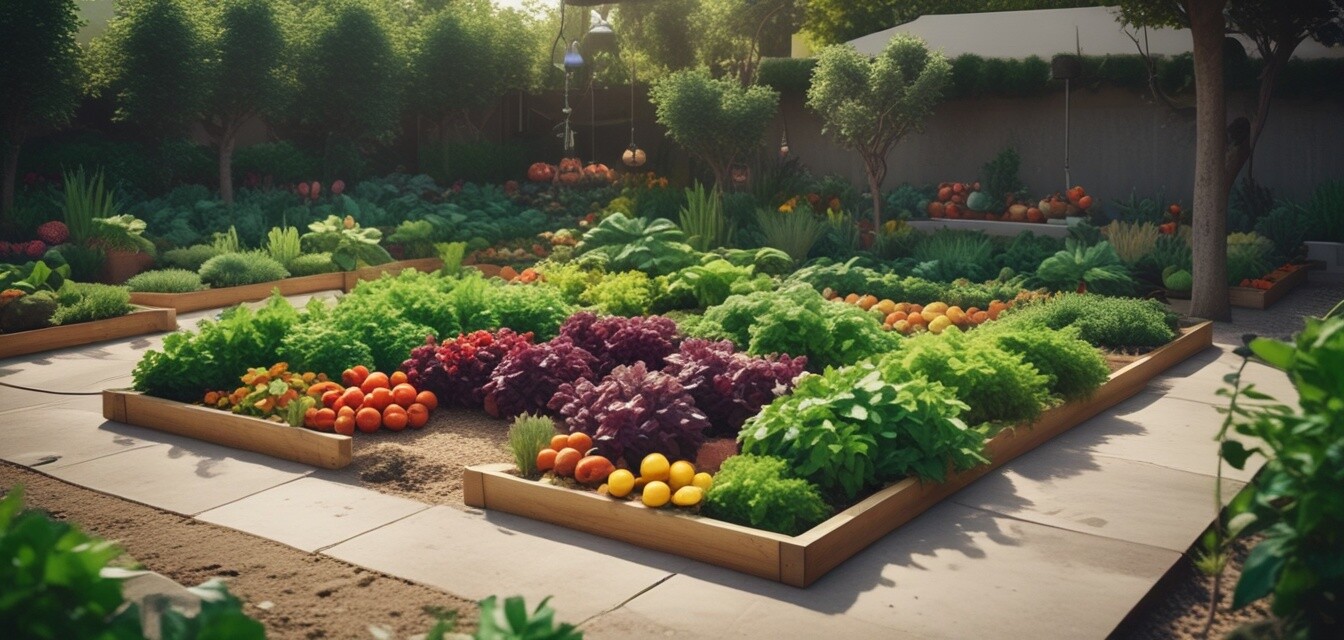
Designing a Modern Edible Garden
Key Takeaways
- Modern edible gardens combine beauty and functionality.
- Incorporate both ornamental and edible plants for aesthetic appeal.
- Effective planning enhances space management and productivity.
- Innovative irrigation and garden tools make maintenance easier.
- Exploring unique designs can elevate the garden’s visual impact.
As the interest in homegrown food grows, so does the desire for beautiful outdoor spaces that serve multiple purposes. A modern edible garden combines the visual appeal of traditional landscaping with the authenticity of growing fruits, vegetables, and herbs. In this article, we will explore how to design a modern edible garden that not only provides fresh produce but also elevates your outdoor living space.
Understanding Modern Edible Gardens
A modern edible garden diverges from the conventional notion of what a vegetable garden should look like. Instead of rows of crops, these gardens embrace innovative designs that incorporate various elements, textures, and color palettes. Let's examine how you can create a stunning yet productive edible garden.
Key Elements of Modern Edible Gardens
| Element | Description |
|---|---|
| Vertical gardening | Utilizing walls, fences, or trellises to grow climbing plants and maximize space. |
| Raised beds | Building elevated garden beds enhances soil conditions and accessibility. |
| Companion planting | Pairing plants together that benefit each other helps with growth and pest control. |
| Seasonal planting | Incorporating plants that thrive across different seasons extends production. |
| Edible landscaping | Integrating edible plants seamlessly into landscaping for aesthetic value. |
Designing the Layout
The layout is critical in achieving a successful modern edible garden. Here are some tips to consider:
- Distinct zones: Create specific areas for different types of plants, such as vegetables, herbs, and fruits.
- Pathways: Design clear pathways for accessibility, ensuring you can navigate your garden easily.
- Focal points: Add features like a herb spiral or a fruit tree to make a striking center of interest.
Incorporating Ornamental Plants
Blending ornamental plants with edible varieties not only enhances beauty but also helps attract beneficial insects. Here’s how to effectively mix the two:
- Choose plants with complementary colors.
- Utilize plants with varying textures—consider leaf sizes and shapes.
- Plant edible flowers (like nasturtiums) that add color and are edible.
Innovative Irrigation Systems
Watering can be a tedious task; hence, consider implementing an innovative irrigation system to streamline the maintenance of your garden.
- Drip irrigation: Provides water directly to the roots of the plants, reducing water waste.
- Soaker hoses: Ideal for raised beds or rows, these hoses deliver moisture evenly.
- Treated water systems: Collect rainwater to use in your garden.
Seasonal Considerations
Planning for seasonal changes can improve the longevity and productivity of your edible garden. Here are a few ideas:
- Consider greenhouses to protect plants against cold weather.
- Use row covers to safeguard against frosts during spring and fall.
- Change your plant selections to adapt to seasonal growing conditions.
Maintenance Tips for a Healthy Edible Garden
Beginner's Section: Essential Maintenance Tips
- Regularly check the moisture levels of your soil.
- Prune dead leaves and stems to encourage growth.
- Implement organic pest control methods to keep your garden healthy.
Enhancing Your Outdoor Space
Additional features can elevate the aesthetics and functionality of your modern edible garden. Consider:
- Outdoor lighting: Create ambiance during evening gatherings.
- Seating areas: Add benches or tables to encourage relaxation.
- Water features: Consider small ponds or fountains for a serene atmosphere.
“An edible garden is not just about food; it’s a lifestyle choice that connects us with nature.”Pros
- Provides fresh produce right at your doorstep.
- Enhances the beauty of your outdoor space.
- Encourages a healthier lifestyle through gardening.
Cons
- Requires ongoing maintenance and care.
- Can be affected by pests and diseases.
- Initial setup can be costly and time-consuming.
By thoughtfully integrating contemporary design with functionality, you can create an edible garden that is both beautiful and productive. Explore more ideas and navigate through your gardening journey with our other posts in the Garden Inspiration category for endless possibilities.